Sap Feeders
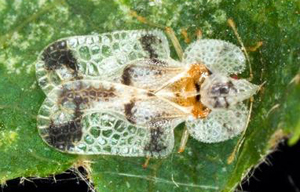
David Cappaert, Bugwood.org
Lace bugs are flat gray sap-feeding insects with clear, ornate, lacy wings; nymphs are spiny and wingless. Both stages live on the lower surface of leaves. As they feed, they leave tiny yellow to white spots on leaves and dark, varnish-like waste spots on the under sides. These lace bugs spend the winter as eggs under bark or in leaf litter. The eggs hatch in early spring and the nymphs begin to feed on plant sap. There are several generations each season. Initially, numbers are so small that feeding symptoms are not noticed until the population peaks in late summer. When abundant, feeding can make plants unsightly and may cause premature leaf drop.
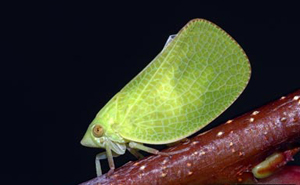
Susan Ellis, Bugwood.org
Leafhoppers are small, light green, active insects that live on the underside of the leaves. They use sucking mouthparts to feed on plant sap. Usually large numbers are present by the time the injury is obvious. Heavily damaged leaves may drop early but this insect usually does not cause serious problems.
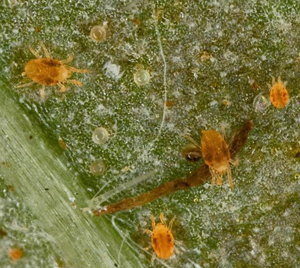
David Cappaert, Bugwood.org
Twospotted spider mites are tiny (1/50 inch) arthropods with a dark spot on each side of the oval, light green to yellow body. They live on the underside of leaves and use needle-like mouthparts to remove the contents of individual cells. This produces tiny white to yellow spots on leaves, sometimes called flecking or bronzing. These mites produce fine silk-like webbing that often covers infested plants. Infestations are usually most serious during hot, dry periods.
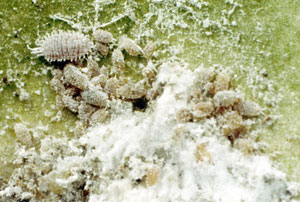
Clemson University - USDA Cooperative Extension Slide Series, Bugwood.org
Comstock mealybugs are small, oval, waxy pests that feed on the sap of plants. Adult females are 3/16 inch long; the body is a brownish color but is coated with a white wax. They produce honeydew as fecal material which can also encourage the growth of black sooty mold on the plant. There are two generations per year, with overwintering eggs hatching in the spring. Spring nymphs feed and mature by July. They mate and then produce another generation that matures by September.
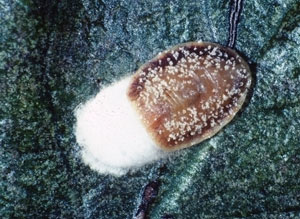
John A. Davidson, Univ. Md, College Pk, Bugwood.org
Cottony camellia scale adult females are about 1/8 inch long but they produce long white egg masses behind them, so they appear much larger. These egg masses are laid on the undersides of leaves and crawlers will hatch and feed throughout the summer. Their feeding results in large quantities of honeydew, which in turn leads to development of black sooty mold.